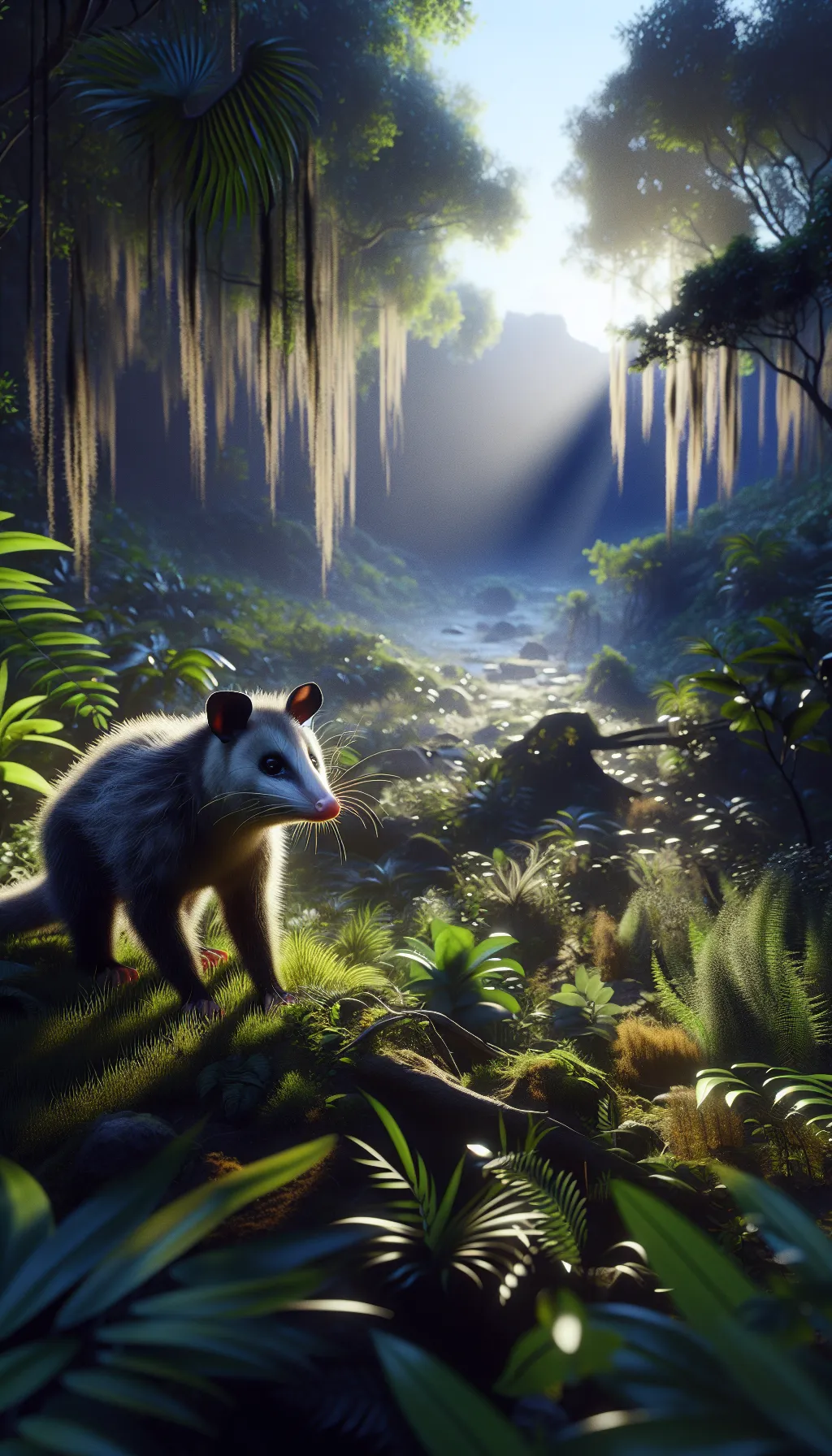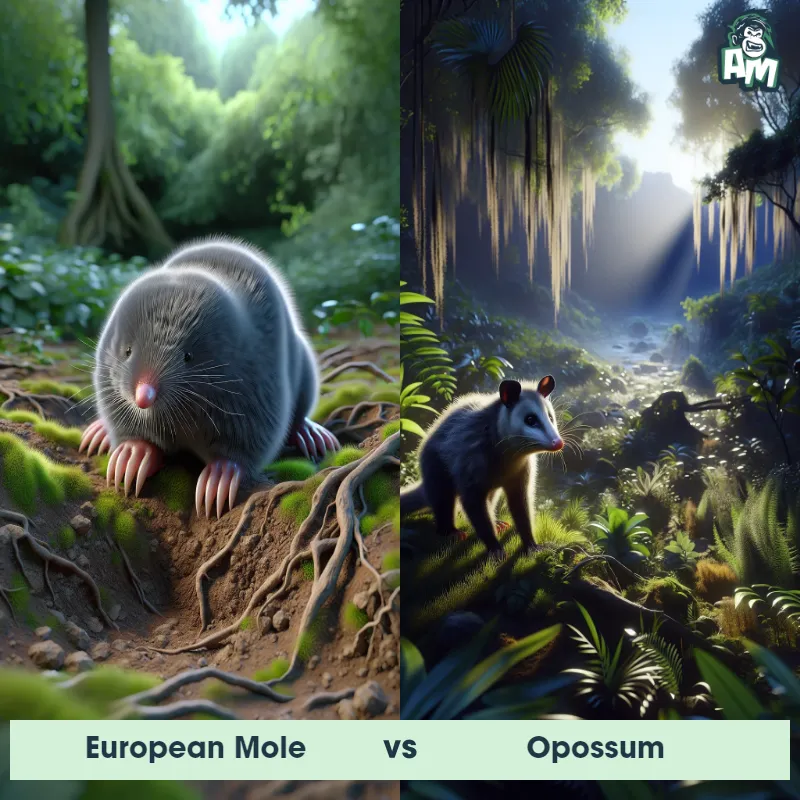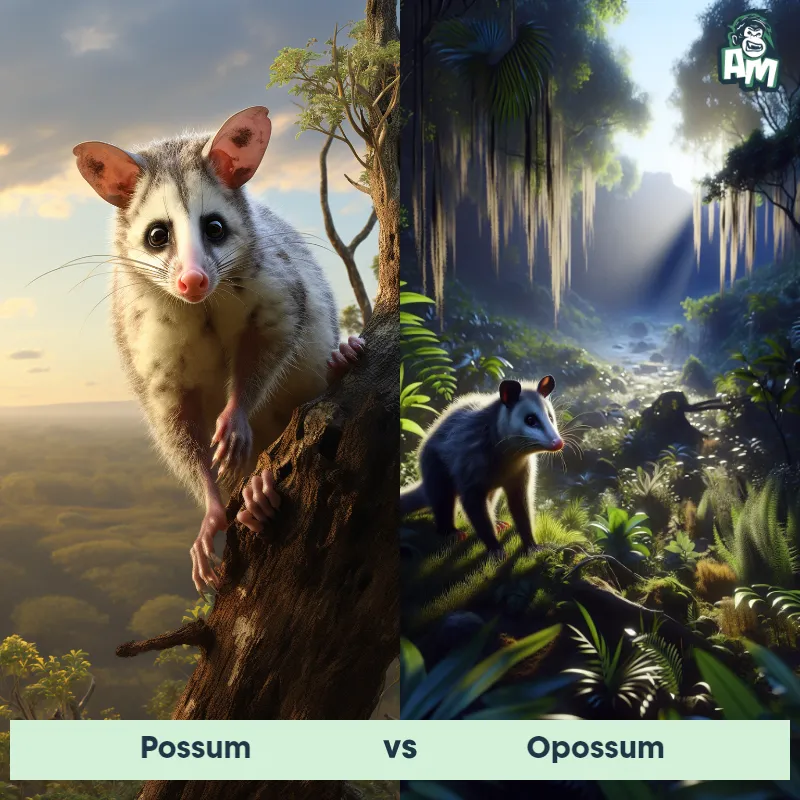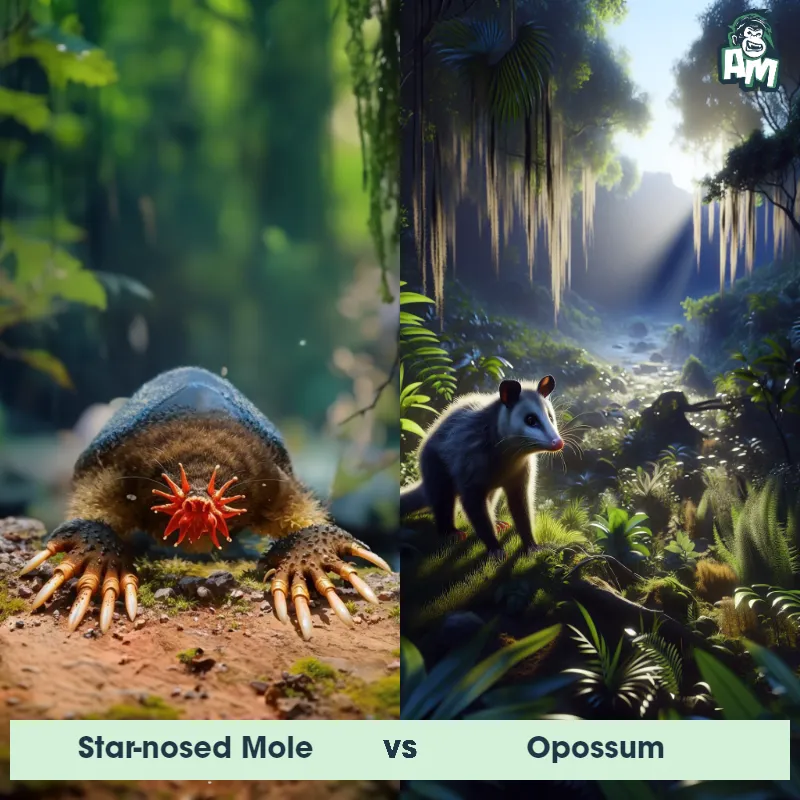The Opossum
The Opossum, also known as the Virginia opossum, is a marsupial native to North and South America. It is characterized by its pointed snout, hairless prehensile tail, and opposable thumbs on its hind feet. The opossum has a unique defense mechanism called "playing possum" where it feigns death when threatened, lying motionless with its mouth open as if it were dead. They are omnivorous animals and have a varied diet that includes fruits, insects, small vertebrates, and carrion.

| Opossum | |
|---|---|
| Size | Height: 9-13 inches (22.9-33 cm) |
| Weight | 1-14 pounds (0.45-6.35 kg) |
| Speed | 4.5 mph (7.24 km/h) |
| Key Strength | Bite strength |
| Biggest Weakness | Lack of speed/agility |
| Scientific Name | Didelphis virginiana |
| Family | Didelphidae |
| Habitat | Forests, woodlands, and wet areas |
| Geography | Native to the Americas, including North and Central America |
| Diet | Omnivorous - feeds on fruits, vegetables, insects, small animals, and carrion |
| Lifespan | 2 years - 4 years |

The Opossum
The Opossum, also known as the Virginia opossum, is a marsupial native to North and South America. It is characterized by its pointed snout, hairless prehensile tail, and opposable thumbs on its hind feet. The opossum has a unique defense mechanism called "playing possum" where it feigns death when threatened, lying motionless with its mouth open as if it were dead. They are omnivorous animals and have a varied diet that includes fruits, insects, small vertebrates, and carrion.
Fun Fact: One fun fact about the Opossum is that it has more teeth than any other North American land mammal, with a total of 50 teeth.
| Opossum | |
|---|---|
| Size | Height: 9-13 inches (22.9-33 cm) |
| Weight | 1-14 pounds (0.45-6.35 kg) |
| Speed | 4.5 mph (7.24 km/h) |
| Key Strength | Bite strength |
| Biggest Weakness | Lack of speed/agility |
| Scientific Name | Didelphis virginiana |
| Family | Didelphidae |
| Habitat | Forests, woodlands, and wet areas |
| Geography | Native to the Americas, including North and Central America |
| Diet | Omnivorous - feeds on fruits, vegetables, insects, small animals, and carrion |
| Lifespan | 2 years - 4 years |
Opossum Matchups
We use AI to simulate matchups between the Opossum and other animals. Our simulation considers size, strength, and natural predatory behaviors to determine the most likely outcome.

Can't find the Matchup you want?
Create Your Own MatchupOpossum: Diet, Predators, Aggression, and Defensive Behaviors
What do Opossums eat?
Opossums are omnivores, which means they eat a variety of foods. Their diet consists of insects, fruits, vegetables, small mammals, birds, eggs, and even carrion. They are known to scavenge for food, making them opportunistic feeders.
Do Opossums have any predators?
Yes, Opossums have several natural predators in the wild. Some of their main predators include owls, hawks, foxes, coyotes, and domestic dogs. Young Opossums are especially vulnerable to predation due to their small size and relatively weak defenses.
Are Opossums aggressive?
Opossums are generally not aggressive animals. They are solitary creatures and will typically avoid confrontation with other animals, including humans. When faced with a threat, their first instinct is to try to escape rather than fight.
Do Opossums fight?
While Opossums are not typically aggressive animals, they may engage in physical combat if they feel threatened or cornered. They have been known to hiss, growl, and even bare their teeth as a defensive display. However, their primary tactic is to play dead (acting as if in a coma) in order to avoid confrontation and deter predators.
How do Opossums defend themselves?
One of the main ways Opossums defend themselves is by playing dead. When they feel threatened, they will collapse onto their side, with their mouth open and tongue hanging out, appearing limp and lifeless. This behavior, known as "playing possum," is an effective defense mechanism that can fool predators into thinking the Opossum is already dead.
What is the biggest weakness of Opossums in a fight?
Despite their ability to play dead and ward off predators, Opossums have some physical limitations that can make them vulnerable in a fight. They have relatively small teeth and claws compared to other predators, which means they may struggle to effectively defend themselves against larger, more aggressive animals. Additionally, Opossums are not particularly fast or agile, so they may have difficulty escaping from a determined attacker.
Fun Fact: Another interesting fact about the Opossum is that they have a low body temperature compared to other mammals, ranging from 94°F to 97°F 34°C to 36°C.
Fun Fact: The Opossum is known for being remarkably resistant to venomous snake bites, as the protein in their blood neutralizes the venom of pit vipers, including rattlesnakes and cottonmouths.













